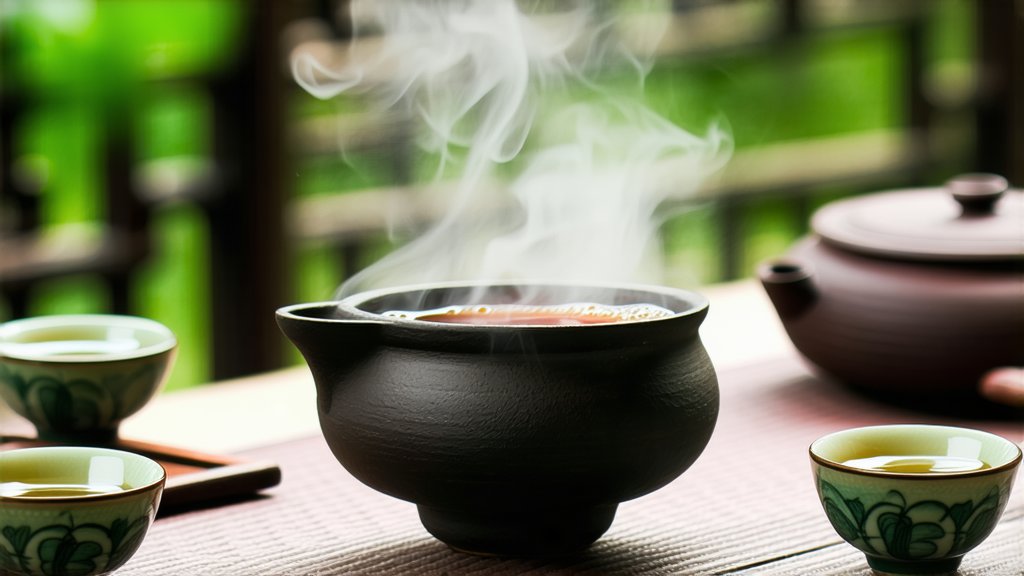
Pu-erh tea, one of the most distinctive and revered varieties within the vast spectrum of Chinese black teas (also known as dark teas), stands as a testament to centuries of tradition, craftsmanship, and cultural significance. Originating from the Yunnan province in southwestern China, Pu-erh has captivated tea enthusiasts worldwide with its unique flavor profile, health benefits, and the intricate art of its production and aging processes. This article embarks on a journey through the history, varieties, manufacturing techniques, and the refined practice of tasting Pu-erh tea, inviting international readers to discover the depth and allure of this extraordinary beverage.
A Glimpse into History
The roots of Pu-erh tea can be traced back over a millennium, with its earliest mention found in ancient Chinese texts during the Tang Dynasty (618-907 AD). However, it wasn't until the Ming Dynasty (1368-1644) that Pu-erh began to gain prominence, particularly after it became a coveted tribute tea offered to the imperial court. Situated along the ancient Tea Horse Road, Yunnan's unique climate and geography fostered the development of a tea culture that was distinct from other regions in China. The tea gained further international recognition during the 17th century when it was introduced to Tibet and subsequently spread along trade routes to India, Myanmar, and beyond.
Varieties of Pu-erh Tea
Pu-erh tea is broadly categorized into two main types: Raw (Sheng) Pu-erh and Ripe (Shou) Pu-erh. Each type undergoes a different post-fermentation process, resulting in distinct flavors, aromas, and aging potentials.
-
Raw (Sheng) Pu-erh: This traditional form of Pu-erh undergoes natural fermentation over time, with the leaves slowly oxidizing and maturing through microbial activity. Sheng Pu-erh is prized for its ability to evolve in flavor and complexity with proper storage, often improving significantly after several years or even decades. Its taste profile typically features a bright, astringent quality with notes of grass, flowers, and fruit.
-
Ripe (Shou) Pu-erh: Invented in the 1970s, Shou Pu-erh undergoes a controlled fermentation process known as "wet piling," where compressed tea bricks are stacked and left to ferment under humid conditions for several months. This accelerates the aging process, producing a mellower, earthier flavor profile with hints of wood, mushrooms, and sometimes a slight sweetness. Shou Pu-erh is often enjoyed sooner after production compared to its raw counterpart.
The Art of Crafting Pu-erh Tea
The production of Pu-erh tea is a multi-step process that combines traditional methods with precise control over fermentation and aging. Here’s an overview of how both Sheng and Shou Pu-erh are made:
-
Plucking and Withering: High-quality leaves are handpicked from ancient tea trees, particularly the renowned ancient arboreal tea gardens of Yunnan. The freshly picked leaves undergo withering to reduce moisture content and initiate enzymatic activity.
-
Fixation: The withered leaves are quickly fried or steamed to halt oxidation, preserving their green color and fresh aroma. This step is crucial for maintaining the distinct characteristics of each variety.
-
Rolling and Shaping: The fixed leaves are rolled to break down cell walls, facilitating the release of flavors during brewing. Depending on the desired product, the rolled leaves may be formed into cakes, bricks, or other compressed shapes using traditional stone molds.
-
Fermentation and Aging: For Sheng Pu-erh, the tea is left to age naturally over time, allowing microbial action to gradually transform its flavor profile. Shou Pu-erh, however, undergoes a more intensive fermentation process. After rolling, the leaves are piled together in a humid environment and turned regularly to ensure even fermentation. This process can last anywhere from several weeks to months.
-
Drying and Packaging: Once fermentation is complete, the tea is dried to stabilize its moisture content and then packaged for distribution or further aging.
The Ritual of Tasting Pu-erh Tea
Tasting Pu-erh tea is not merely an act of consumption; it is a meditative ritual that engages all the senses. Here’s a guide to savoring this exquisite tea:
-
Preparation: Begin by selecting a high-quality Pu-erh tea cake or brick. Use a pu er needle or a small knife to break off a portion of the tea, typically around 5-8 grams per serving. Rinse the tea briefly with hot water to cleanse the leaves and awaken their flavors.
-
Brewing: Place the rinsed tea in a Yixing clay teapot or a Gaiwan (a Chinese lidded bowl), which enhances the tea's flavors due to their porous nature. Steep the tea in water heated to approximately 200°F (93°C) for about 10-15 seconds for the first infusion. Subsequent infusions can be steeped progressively longer, as the leaves unfurl and release their complexities.
-
Aroma and Appearance: Before taking a sip, inhale deeply to appreciate the tea's aroma. Observe the liquor's color, which can range from light amber for young Sheng Pu-erh to deep red or brown for aged Sheng or Shou Pu-erh.
-
Tasting: Take a small sip, allowing the tea to coat your palate fully. Notice the initial flavors, mid-notes, and aftertaste. Pu-erh tea offers a symphony of tastes—from the subtle sweetness and floral notes of young Sheng to the rich, earthy depth of aged Shou. Pay attention to the texture and mouthfeel, which can vary from smooth and silky to robust and astringent.
-
Multiple Infusions: One of the joys of Pu-erh tea is its longevity in brewing. Each infusion reveals new layers of flavor, making it a journey rather than a single experience. Continue steeping until the tea loses its vigor or becomes too faint to enjoy.
In conclusion, Pu-erh tea encapsulates the essence of Chinese tea culture—its history intertwined with myth and tradition, its production a blend of art and science, and its tasting a sensory exploration that deepens with every sip. Whether you are drawn to the vibrant vitality of Raw Pu-erh or the mellow warmth of Ripe Pu-erh, this timeless beverage offers a window into the soul of Yunnan and a bridge connecting past and present through the simple yet profound act of tea drinking.